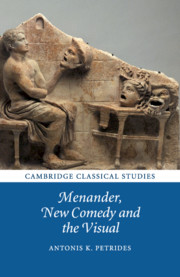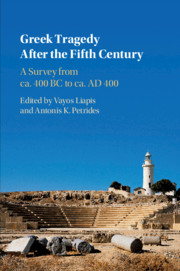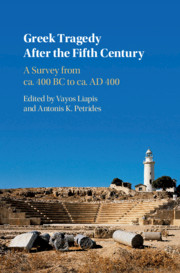Menander, New Comedy and the Visual
This book argues that New Comedy has a far richer performance texture than has previously been recognised. Offering close readings of all the major plays of Menander, it shows how intertextuality - the sustained dialogue of New Comedy performance with the diverse ideological, philosophical, literary and theatrical discourses of contemporary polis culture - is crucial in creating semantic depth and thus offsetting the impression that the plots are simplistic love stories with no political or ideological resonances. It also explores how the visual aspect of the plays ('opsis') is just as important as any verbal means of signification - a phenomenon termed 'intervisuality', examining in particular depth the ways in which the mask can infuse various systems of reference into the play. Masks like the panchrēstos neaniskos (the 'all-perfect youth'), for example, are now full of meaning; thus, with their ideologically marked physiognomies, they can be strong instigators of literary and cultural allusion.
- Offers an original, holistic interpretation of New Comedy emphasising both verbal and visual allusion
- Embeds the plots in the various literary and cultural discourses of the contemporary polis
- A theoretically aware yet generally jargon-free reading of Menander which will be of strong interest to all classicists as well as scholars of theatre, performance and cultural studies
Product details
November 2018Paperback
9781107645813
334 pages
217 × 140 × 18 mm
0.45kg
9 b/w illus.
Available
Table of Contents
- Introduction
- 1. Menander's New Comedy between reality and textuality
- 2. New performance: visuality and intervisuality in Menander
- 3. Of Greeks and others: mask, character and action in New Comedy
- 4. Of mice and (young) men: the mask as inter-face
- 5. A few good men: the panchrēstos mask and the politics of perfection.




